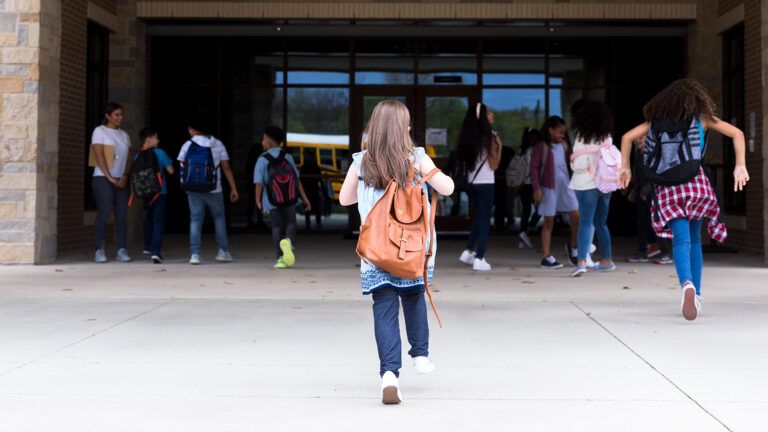Your six-year-old won’t stop fighting with her brother, though you’ve asked several times. Your 12-year-old is always late getting ready for church. Your 15-year-old keeps coming in after curfew. And you’re sick and tired of yelling at them. Discipline is probably the biggest challenge in parenting. Should you threaten and punish to get your children to behave? Should you let them figure out the consequences on their own? Or is there another way?
Positive discipline combines love and limits, and practiced well, makes children and parents happy and well adjusted. Research shows that children brought up by parents who are both kind and firm get along better with their classmates, take initiative more often and are more curious and excited about the world. We asked the experts for proven techniques for raising responsible, confident, caring kids.
Positive discipline is not about blame or punishment, it’s about instruction—that is, teaching kids how to think, not what to think. And in order to work, says Jane Nelsen, Ed.D., mom of seven and author of 17 books on positive discipline, it’s got to include four criteria.
First, it has to help give children a sense of connection. Kids of all ages have a natural desire to belong. Children who feel they’re a significant part of the family, the school and the larger community—whether it’s town, church, temple or beyond—are less likely to misbehave. To foster this connection, parents must separate the child from his behavior. A child shouldn’t be made to feel bad about himself, but he should understand how his actions and attitude can be harmful to himself and to the group he’s part of.
Second, discipline should be respectful and encouraging. Sahara Pirie of Seattle, Washington, who has been using and teaching positive discipline for years, says, “We are all due equal dignity and respect, even children.” That’s why the old technique of washing a kid’s mouth with soap after she says a swear word isn’t very useful. It makes more sense to talk about why it’s not good to use that word and prompt her to think about other ways to express herself. The soap instills fear and disgust; the discussion empowers the child to make a better choice the next time she feels the need to vent strong emotions.
Third, positive discipline must work long term. It can’t just pose short-term solutions. Santa Cruz, California, dad Adrian Garsia acted like a drill sergeant with his two kids until he realized barking orders wasn’t allowing them to learn what to do in the future. “Now I think of myself as the copilot,” says Garsia. “My kid’s the one who needs to learn how to fly by herself. I’m just assisting.” A consistent approach to discipline is crucial. Kids need to know the rules and the consequences for breaking them. They also need to know that parents will follow through on the consequences.
Finally, positive discipline should teach social and life skills—cooperation, problem-solving, respect and concern for others, how to contribute to home, school and community. Don’t do everything for your kids. Give them meaningful jobs, tasks that keep the household running smoothly. Everyone likes to feel capable and needed. And let kids make mistakes, Nelsen says. When you rush in to rescue them, “they don’t develop the emotional muscles to cope with disappointment.”
There are positive discipline techniques geared for different ages. Developed by psychologists Michael Weiss and Sheldon Wagner, “drawing the line” establishes firm boundaries with kids ages 2 to 10 while giving them control over difficult situations. It’s a fast way to improve behavior—from sibling fighting to picky eating to uncooperative attitudes.
Let’s say the Jones boys’ constant fighting is driving their parents crazy. Every time Adam starts a fight with Sam, their mom, Helen, gets mad and yells at them to stop. But they just fight more. If Helen draws the line, that means every time Adam starts a conflict, she steps in immediately. “No fighting,” she says calmly, and takes Adam to another room for 30 seconds. “Do you know why you are here?” Helen asks him. If he doesn’t reply, she tells him, “You’re here because you are fighting with Sam. When you fight, you will go to time-out. When you’re ready to play nicely, you can go back.” Then she leaves the room and allows him to either stay in time-out or return to playing with his brother.
Time-out is a popular parenting tool, but positive discipline advocates say it’s often used incorrectly. “One five-minute time-out provides only one opportunity to teach,” writes Wagner in Drawing the Line, because it’s long enough for the kid to forget what he did wrong. To be effective, time-out should be a immediate, quick response to bad behavior. And the parent must be prepared to implement it again and again. According to Wagner, even if you have to take a child to time-out 12 times, for 30 seconds each time, he will learn how to behave faster than if he had one time-out for six minutes.
Kids learn by example, so watch your own behavior. When Mimi Doe, Ed.M., author of 10 Principles for Spiritual Parenting, has parents keep track of how many negative words they say to their kids, they’re usually stunned. One study showed that children hear the words “no” or “don’t” nearly 150,000 times while growing up, whereas they hear “yes” much less. These negative messages, Doe says, diminish their spirit. Being clearer in your instructions can help cut the negativity. “Don’t leave the bathroom a mess” is vague. “After your bath, put your toys in the bin and hang up your towel” lets your child know exactly what to do.
If you feel yourself getting out of control, take your own time-out. Saying “I’m going to the other room until I cool off. We can talk when we’re both calmer” not only defuses the situation, it shows your child a positive way to handle conflict. Same goes for when you make a mistake. If you admit it, apologize and focus on a solution, you’re building trust and teaching your child that a mistake is a chance to learn.
Kids ages 10 and up can start setting their own guidelines. Nelsen recommends holding family meetings to divvy up chores and discuss discipline issues. “Usually parents tell a child what to do [when she breaks the rules], but you need to ask her what happened, how does she feel, and what ideas does she have for this not happening again. Kids are much more willing to go along with something they helped create.” Teenagers, especially. “The more you try to control, the more they go underground,” as Nelsen puts it.
Grounding and taking away privileges can be used as a last resort, says University of Minnesota family relations specialist Kathleen A. Olson, M.S. “Parents should try to focus on preventive tools that build trust and respect rather than tools to use after the misbehavior. If a consequence tool is used, it should fit naturally with what your teen did wrong.” Taking away the car keys after your teenager drove somewhere and stayed out too late is an appropriate consequence. But be sure to talk about why.
And be sure to catch your child being good! This goes for all ages. When kids behave well, reward them. That can be as simple as smiling and telling them what a great job they are doing, says Nelsen. A hug is an excellent form of positive reinforcement. So is descriptive praise, or being specific about what you’re pleased with. “You made your bed. You put your toys where they belong. And now you have your shoes on and are ready to go to the park. That’s great!” Your child will understand how she earned your approval, and will be able to evaluate her own behavior positively along with you. In the future, she’ll be more likely to repeat what she did because she knows exactly what you liked.
Are you hesitant to use positive discipline because you’ve been parenting in a different way? Don’t worry. Our experts say it’s never too late. “Kids love it!” says Nelsen. “Even if you’re just starting positive discipline in their teens, they’ll respond well to the fact that you’re treating them with a lot of respect.”
Most of what children learn about the world they learn through their parents. So if you want to have a positive child, be a positive parent. It’s the best example you can set.
Download your FREE positive thinking ebook!





